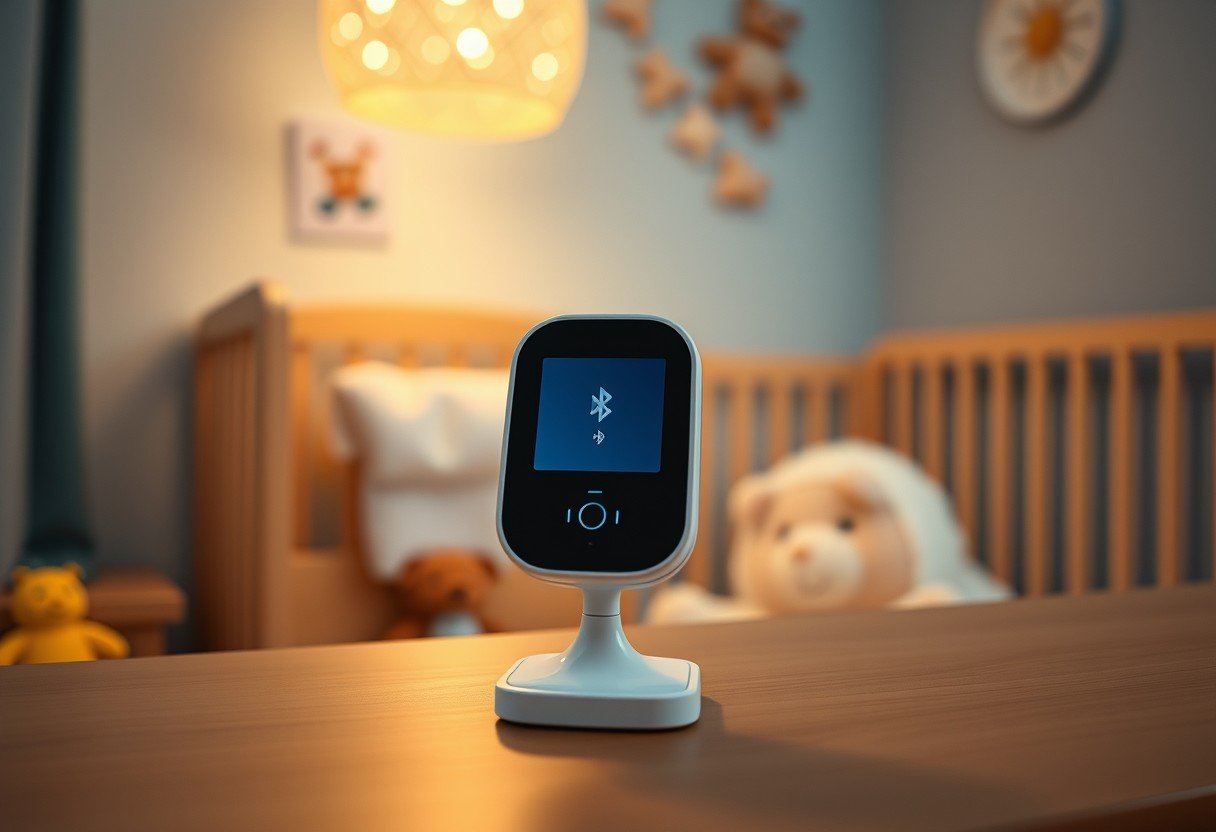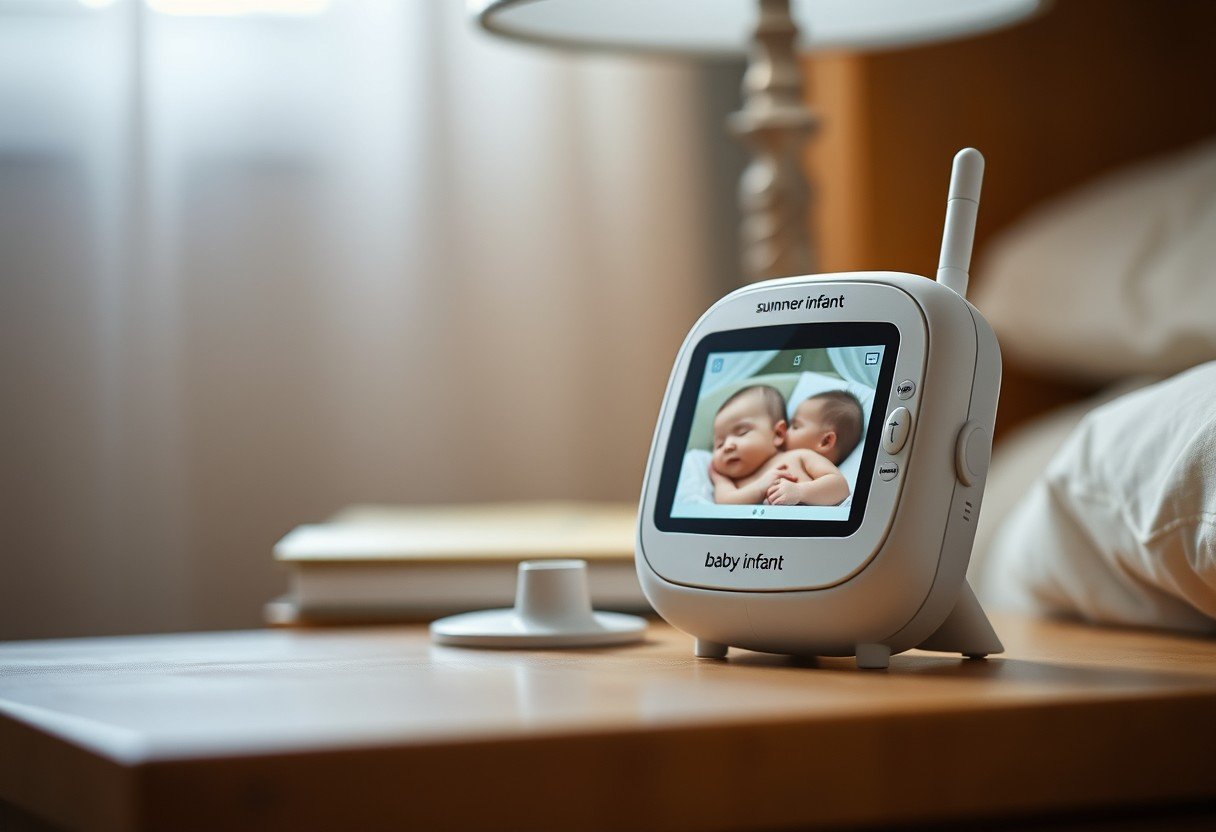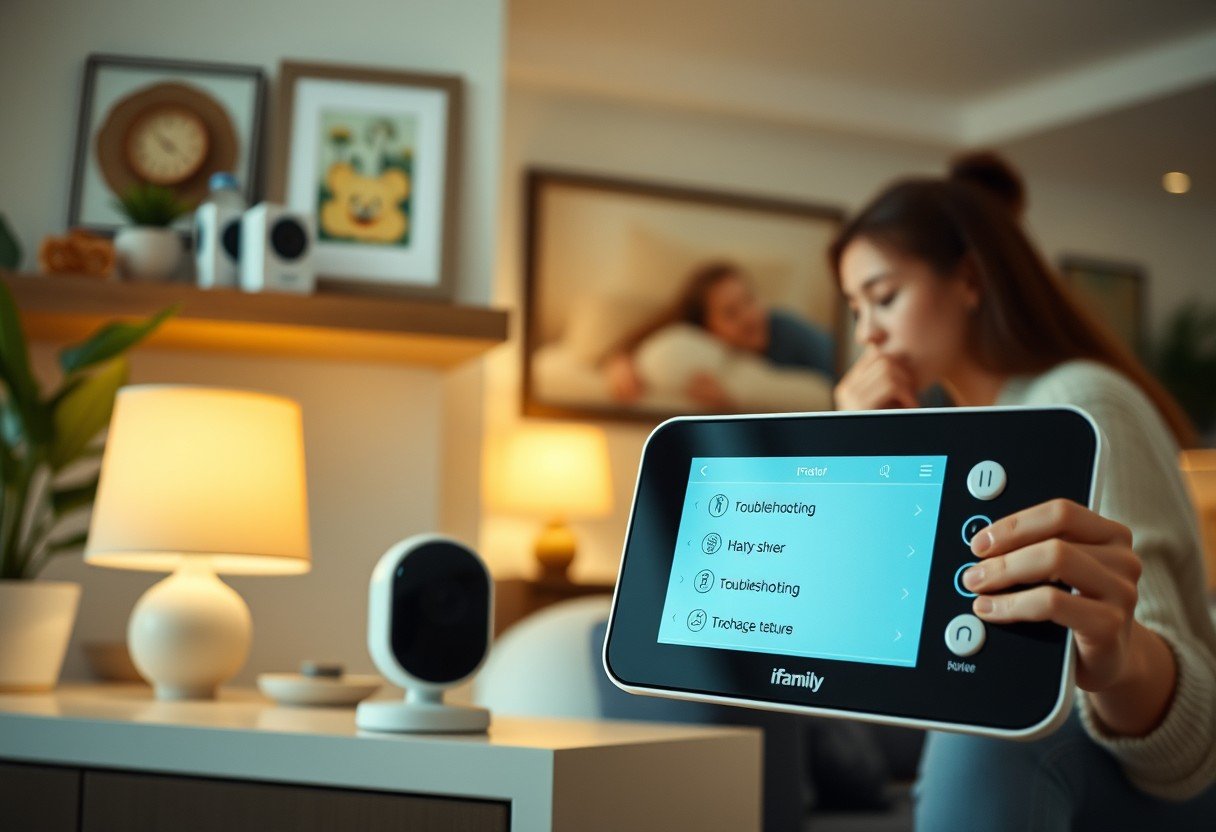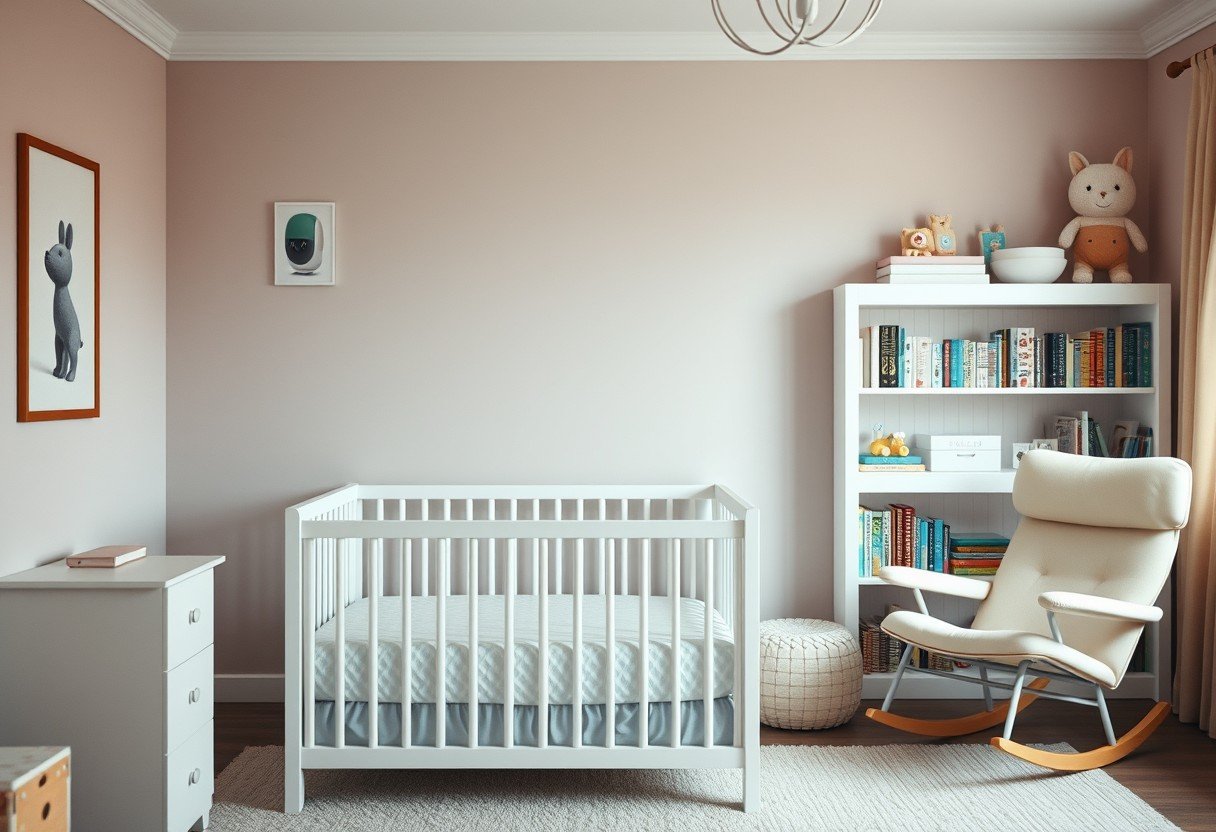There’s a growing trend in using Bluetooth baby monitors to keep an eye on your little one, but these devices come with their own set of challenges. While they promise convenience and portability, you may encounter issues such as connectivity problems, privacy concerns, and battery life limitations. In this article, we’ll explore these common problems, providing you with insights to make an informed choice and enhance your parenting experience with technology.
Key Takeaways:
- Interference: Bluetooth monitors can experience interference from other wireless devices, leading to poor signal quality and potential audio/video disruption.
- Range Limitations: The effective range of Bluetooth is limited, meaning parents may encounter connectivity issues if they move too far from the monitor.
- Security Concerns: Bluetooth technology may expose baby monitors to hacking risks, allowing unauthorized users to access audio feeds.
- Batteries and Connectivity: Frequent battery replacement or connectivity dropouts can disrupt monitoring, causing concern for parents.
- Sound Quality: Some Bluetooth baby monitors may have subpar audio quality, making it difficult for parents to hear their baby’s sounds clearly.
Overview of Bluetooth Baby Monitors
The influx of Bluetooth baby monitors has transformed how parents keep an eye and ear on their little ones. These devices offer wireless audio and, in some cases, visual feedback, enabling you to stay connected to your baby without being tethered by cords. However, as convenient as they may seem, these monitors come with a range of issues that parents should be aware of before making a purchase.
How Bluetooth Baby Monitors Work
Monitors operate using Bluetooth technology to create a secure connection between the baby unit and your smartphone or a specific receiving device. By pairing these devices, you can wirelessly receive audio or video feeds, allowing you to monitor your baby from a distance. This functionality is particularly useful for parents who want flexibility in moving around the house while still keeping in touch with their baby’s needs.
Advantages of Using Bluetooth for Monitoring
With Bluetooth baby monitors, you enjoy the benefit of wireless connectivity, allowing you to monitor your child from virtually anywhere within range. The freedom of movement enhances your daily routine, enabling you to multitask without compromising your baby’s safety. Additionally, these monitors often come with user-friendly apps for your smartphone, making it easy for you to access real-time monitoring features.
Monitors equipped with Bluetooth technology provide an array of benefits that make them particularly appealing to busy parents. You can effortlessly receive notifications and alerts through your smartphone, ensuring you can attend to your baby’s needs promptly. Furthermore, many models offer quality audio and video streaming, enhancing your ability to check in on your little one. This flexibility and convenience can lead to a greater peace of mind, allowing you to focus on other tasks while remaining connected to your child’s well-being.
Common Connectivity Issues
It’s important to recognize that Bluetooth baby monitors can face various connectivity issues that may hinder their performance. These problems might include range limitations, interference from other devices, or even software glitches. Understanding these common challenges can help you take proactive steps to ensure a reliable connection between you and your baby monitor.
Range Limitations
Connectivity limitations can occur due to the restricted range of Bluetooth technology. Most Bluetooth baby monitors have an effective range of around 30 feet, depending on the environment. If you move beyond this distance, the connection can drop, resulting in disconnection from the monitor and potential loss of audio or video feed.
Interference from Other Devices
Connectivity issues can also arise from interference caused by other electronic devices operating in your home. Bluetooth operates on the same frequency as many household gadgets, like Wi-Fi routers and microwaves. If you experience abrupt changes in connection quality or static noise, it could be due to these devices disrupting your baby monitor’s signal.
Limitations in connectivity may necessitate repositioning your baby monitor or turning off nearby devices to improve performance. You might also consider using a dual-band Wi-Fi router to minimize disruption, as these can better manage interference with Bluetooth signals. Regularly checking and updating your baby monitor’s firmware can also enhance its resistance to connectivity issues.
Security Concerns
Keep in mind that Bluetooth baby monitors can pose significant security risks. While they offer convenience, these devices may also expose your child’s private information and interactions to potential breaches. As a parent, it is crucial to understand the vulnerabilities associated with using such technology in your home.
Risks of Hacking
With the increasing prevalence of hacking incidents, Bluetooth baby monitors are not immune to threats. Cybercriminals can exploit weaknesses in the device’s software or network connections, allowing unauthorized access to the feed or even the ability to communicate through your monitor. This risk underscores the importance of diligent security measures when using these devices.
Data Privacy Issues
Security concerns extend to data privacy issues with Bluetooth baby monitors. The data transmitted by these devices, such as audio and video feeds, can potentially be intercepted or accessed by unauthorized parties, leading to significant privacy violations.
Issues surrounding data privacy are particularly alarming, as many Bluetooth baby monitors store information online or connect to apps that may not have robust security protocols. Your conversations and video footage could be at risk if proper measures aren’t followed, such as using strong passwords and regularly updating your devices. Ensuring that your baby monitor complies with the latest security standards is imperative in safeguarding your family’s privacy.
Audio and Video Quality Problems
Not all Bluetooth baby monitors deliver the high-quality audio and video you expect. Many devices fall short in providing clear, crisp sound and sharp images, leading to potential concerns about monitoring your baby effectively. Issues may arise due to interference, distance, or even poor microphone and camera quality. These limitations can cause stress and anxiety, as you want the best for your child.
Latency Issues
The delay between real-time sounds or movements and what you see or hear through your monitor can be frustrating. This latency can lead to misjudging situations, as you might not respond immediately to your baby’s needs. Ideally, you want instantaneous feedback to ensure your little one feels safe and secure.
Clarity of Sound and Image
One common issue you may encounter is the lack of clarity in sound and image quality. A monitor that fails to deliver a clear view or a crisp sound can make it difficult to understand what’s happening with your baby.
Understanding the importance of clarity in both sound and image is crucial for effective monitoring. Poor audio quality may prevent you from hearing your baby’s cries or sounds of distress, while unclear video can hinder your ability to observe their movements. High-quality monitors feature advanced microphones and cameras that can capture every nuance, allowing you to respond appropriately. Investing in a reliable device is imperative to ensure your child’s safety and your peace of mind.

Battery Life Challenges
Once again, battery life is a major concern with Bluetooth baby monitors. Many models struggle to maintain a consistent charge, which can lead to interruptions during crucial monitoring periods. It’s vital to consider how often you need to charge the device, as a depleted battery may leave you unable to monitor your baby effectively, especially during the night when you need it most.
Impact on Usability
Life becomes increasingly complicated when your baby monitor requires frequent recharging. Constantly worrying about whether your device has enough battery can detract from your peace of mind, making you question its reliability. This unpaid attention can lead to missed alerts or, worse, a dead monitor when you need it the most.
Solutions for Extended Use
Life can be more manageable with the right strategies for extending your monitor’s battery life. Ensuring optimal use can make a significant difference in how often you need to recharge your device. By following a few simple practices, you can enhance its longevity and ensure that you’re always connected to your little one.
Another effective solution is to invest in a high-capacity external battery or power bank specifically designed for your Bluetooth monitor. In addition, consider using your monitor in power-saving modes when possible. Pairing this with an organized charging routine—like charging during naps or overnight—can ensure that your device stays powered when you really need it, ultimately giving you more confidence in your baby monitoring strategy.
User Experience and Reliability
After investing in a Bluetooth baby monitor, you’ll want to ensure it provides a reliable user experience. However, various issues can arise, impacting the monitor’s performance and your peace of mind. From connectivity problems to inconsistent audio quality, your overall experience may suffer, leading to frustration during crucial monitoring moments. The trust you place in such devices is crucial, making it imperative to understand the potential reliability issues associated with Bluetooth technology in baby monitoring.
Software Glitches
Glitches can be a common headache when using Bluetooth baby monitors. You may encounter problems like device disconnection, dropped signals, or audio that lags or stutters. These software hiccups not only interrupt your monitoring but can also leave you feeling anxious about your baby’s safety. Regular updates offered by manufacturers can help ease these issues, but consistency in performance isn’t always guaranteed.
Ease of Use
Experience plays a crucial role in the effectiveness of your Bluetooth baby monitor. Ease of use is imperative; if you find the setup complicated or controls difficult to navigate, it can detract from your overall enjoyment of the product. Additionally, an intuitive interface is vital for quick adjustments and troubleshooting during critical times, ensuring that you can monitor your baby’s wellbeing without undue stress.
A user-friendly design should allow you to easily connect devices and access imperative features with minimal effort. You should be able to control the volume, check the battery life, and adjust settings swiftly without fumbling through complex menus. If your Bluetooth baby monitor doesn’t offer a seamless experience, it can add unnecessary stress during your parenting journey, making it important to choose a model that prioritizes user experience.
To wrap up
Now that you’re aware of the common issues associated with Bluetooth baby monitors, you can make informed decisions for your family’s safety. From signal interference to limited range and privacy concerns, it’s vital to thoroughly assess the features that matter most to you. By understanding these potential drawbacks, you can choose a monitor that best suits your needs while ensuring the security and comfort of your little one.
FAQ
Q: What are the most common connection issues with Bluetooth baby monitors?
A: Common connection issues with Bluetooth baby monitors can include problems such as the monitor not pairing with the smartphone or the parent unit, intermittent disconnections during use, and Bluetooth range limitations. To troubleshoot, ensure that both devices are fully charged, within range of each other (usually within 30 feet), and that Bluetooth is enabled. Sometimes, a simple restart of both devices can resolve connectivity problems.
Q: Why does my Bluetooth baby monitor experience static or interference?
A: Static or interference in Bluetooth baby monitors can occur due to a few factors, including physical barriers (walls or large furniture), other electronic devices causing interference, or an outdated monitor. To minimize interference, try moving the monitor closer to the parent unit, reducing obstacles, and keeping it away from microwaves or Wi-Fi routers. If the problem persists, checking for firmware updates for the monitor may help improve performance.
Q: What should I do if my Bluetooth baby monitor’s battery drains quickly?
A: Rapid battery drain can be a common issue with Bluetooth baby monitors. To manage battery life, check if you’re using power-saving modes, lower the display brightness, and reduce sound sensitivity. Additionally, ensure that the monitor isn’t left on continuously when not in use, as this can deplete the battery quickly. If battery drain continues to be excessive, it may be time to replace the battery or consult the manufacturer for potential defects.
Q: How can I improve the audio quality of my Bluetooth baby monitor?
A: If you’re experiencing poor audio quality with your Bluetooth baby monitor, several factors could be at play. Ensure that both units are charged and that you’re within the effective range. Environmental factors can also impact sound quality, such as background noise from the home environment. To enhance audio quality, consider selecting a less noisy area for both the baby unit and the parent unit and reduce interference from other devices. Lastly, check for firmware updates that may improve audio functionality.
Q: What should I do if my Bluetooth baby monitor frequently loses connection?
A: If your Bluetooth baby monitor frequently loses connection, first check if any objects or walls may be interfering with the signal. Bluetooth technology typically works best with a clear line of sight. Make sure both devices are updated with the latest firmware and that they are within the optimal range (usually no more than 30 feet). If connection issues persist, resetting the Bluetooth settings on both devices or reconnecting them may resolve the issue. Also, consider contacting the manufacturer for support if none of these solutions work.








Leave a Comment